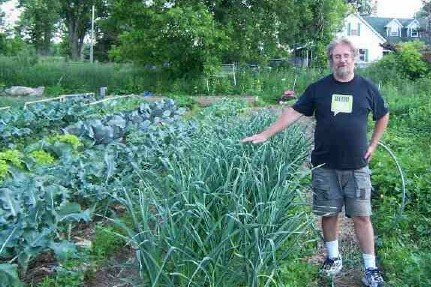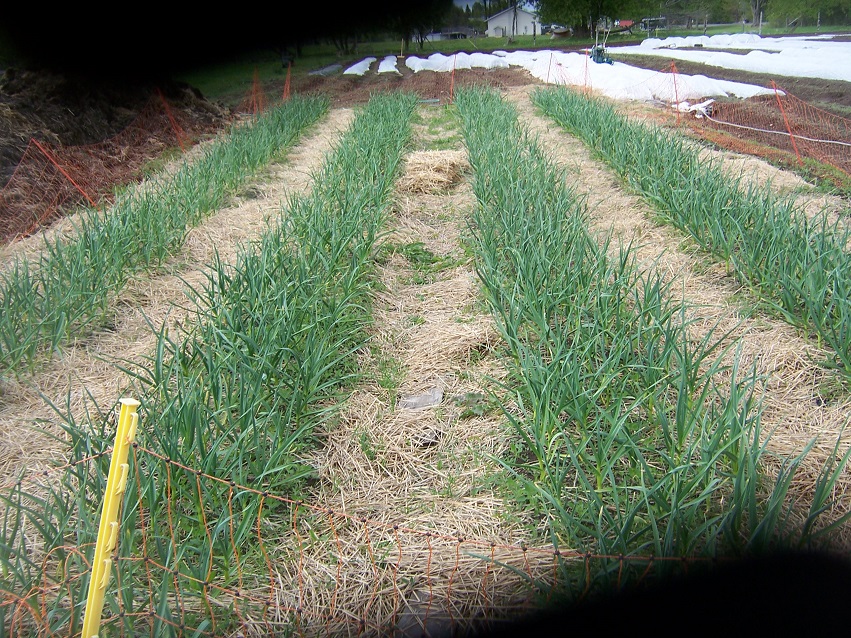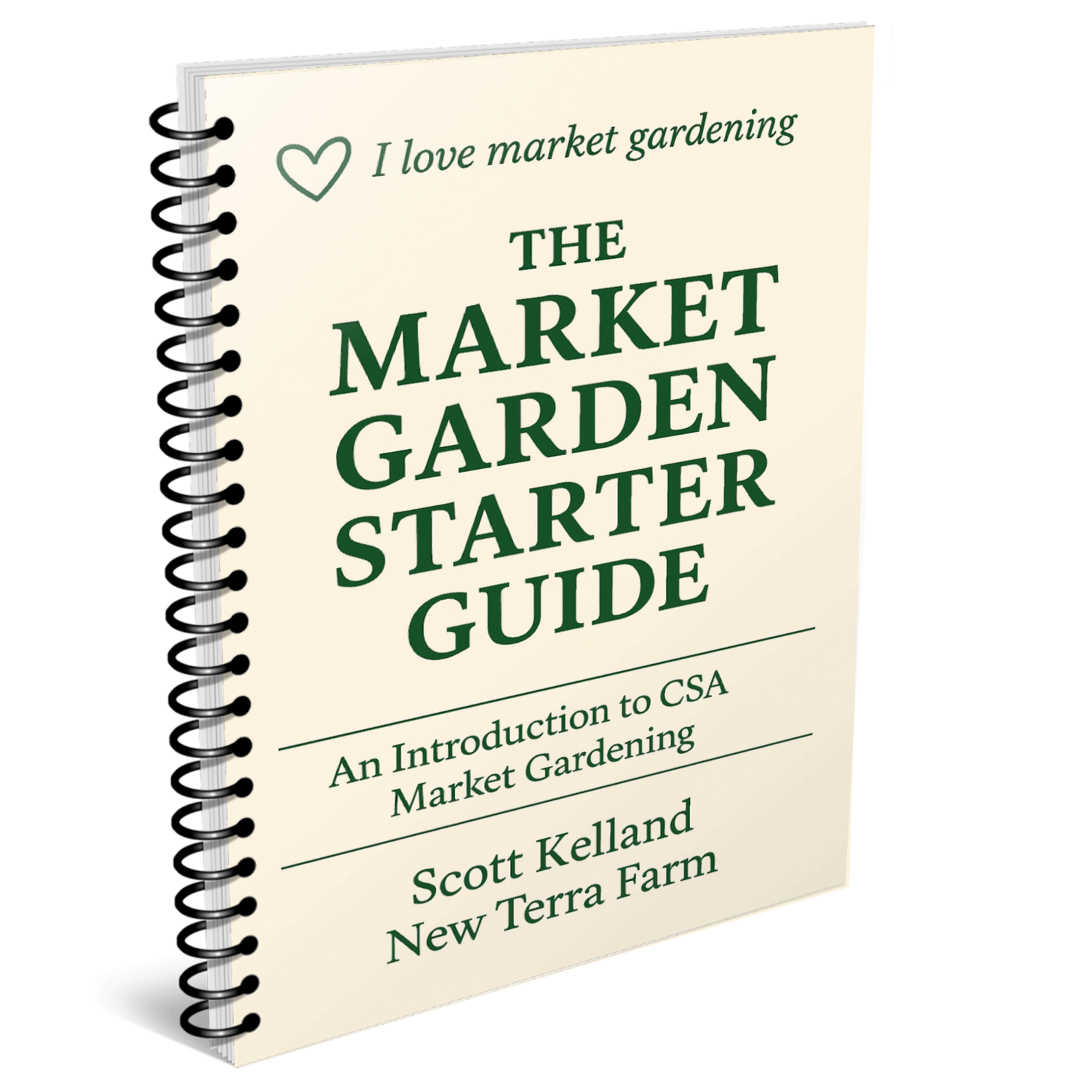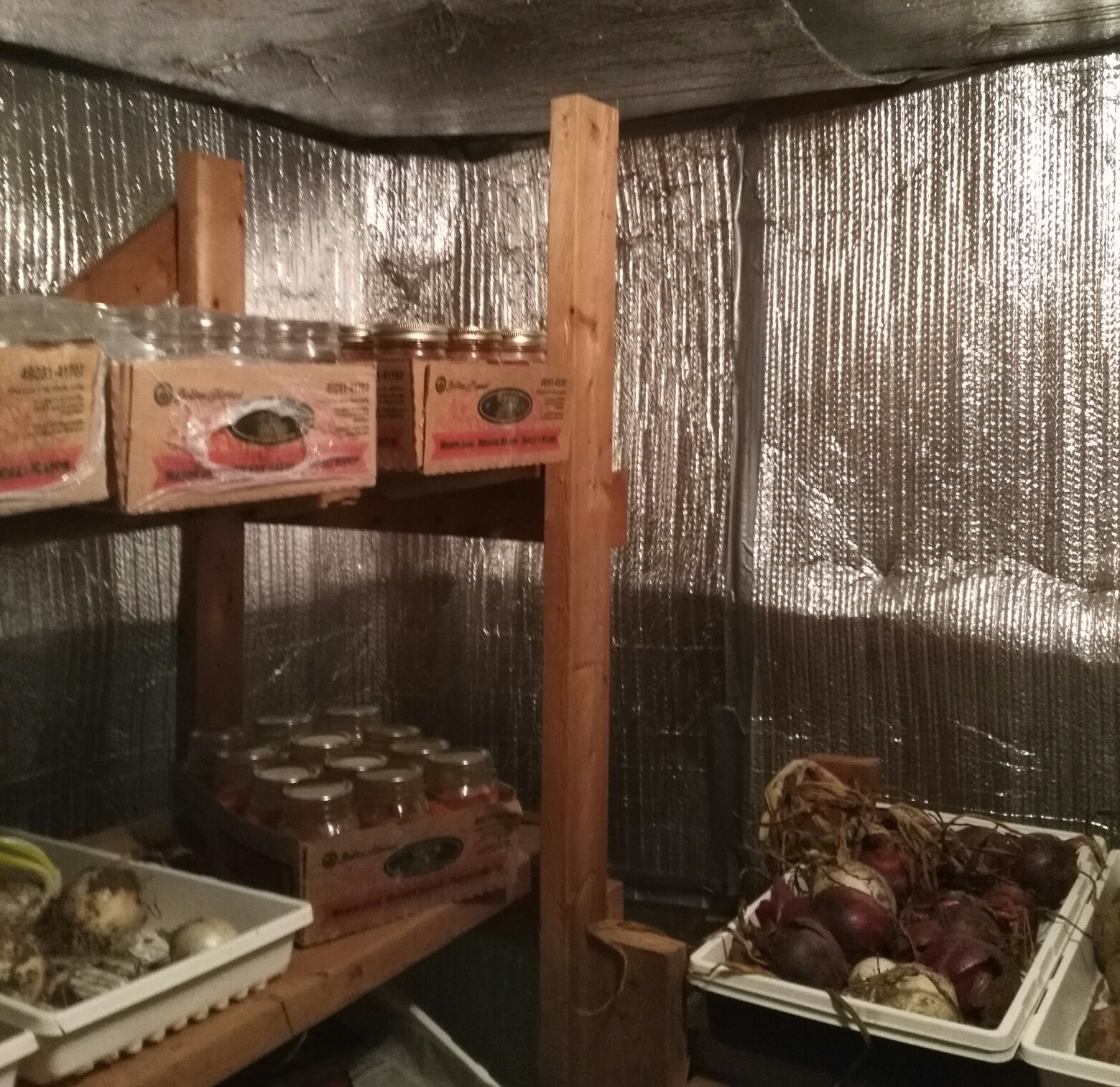How to Grow Garlic
 I love to grow garlic! I love to grow garlic!Grow garlic in the fall for a bumper crop next summer. Garlic is easy to grow for both the home and market gardener. And store-bought is just no comparison to your own home-grown organic garlic. Why grow garlic?
Garlic is a crop with many beneficial qualities. We grow hundreds of pounds each year, both for ourselves, our animals, and for our market. Some chopped-up garlic added to chicken feed helps prevent internal parasites and builds up their immune systems. Note: don't over do it with egg-laying birds, too much garlic can affect the taste of the eggs. Garlic also makes a good general-purpose organic insecticide, effective against aphids, thrips, and white flies. Just chop up some garlic and add it to a couple tablespoons of vegetable oil. Let it sit overnight, then strain out the garlic pieces, dilute the oil with a couple cups of water, and spray on your afflicted plants. And of course, garlic is delicious and beneficial to humans as well. You can read more about the proven health benefits of garlic here How we grow garlic at New Terra Farm
Here's how to grow garlic the New Terra Farm way. First, the timing. We're in Canadian Zone 5, with a typical First Frost Date of October 5. Adjust your timing accordingly, but the biggest, best garlic is grown from fall-planted cloves. We will typically put garlic cloves in the ground between mid-October and mid-November, depending on the long-range forecast. The garlic variety we have found most reliable is called Music. We have a bed prepared for our garlic well ahead of time. We enrich the beds with some our 3-year old composted horse bedding. We plant garlic through plastic mulch film, to keep weeds down in the spring and summer. We plant the cloves 6 inches apart in all directions, in wide beds. We run a drip hose UNDER the mulch, to make sure the garlic gets enough water if the season is dry. We have also replanted a bed that grew early snap beans with garlic. The spacing is the same, and the garlic seems to do well following beans. We'll then cover the garlic with a layer of straw or hay mulch, until spring.  We use old mulch hay between the rows to keep weeds down We use old mulch hay between the rows to keep weeds downOnce the garlic well up, we move the hay mulch to the aisles. We cover the garlic with floating row cover to protect against leek moth. This is just about the only pest that attacks garlic. Free Market Garden Start-up Guide The consumer demand for fresh local organic food has never been higher. Bad news on the supply chain is good news for local growers. Get my free Organic Market Gardener Start-up Guide and see if this is the right time to launch your CSA market garden business. Enter your best email and the guide will be sent to you right away. Harvesting and curing your garlic
We cut off the garlic scapes in May or early June. The scape is the flower stalk of hard-neck garlic plants.They can be used just like garlic cloves to add flavour to your cooking. Our market garden customers love them. In our zone, our garlic is usually ready for harvest around mid-July. We pay attention to the weather forecast, and if heavy rain is predicted we might pull the garlic a little early. Once the leaves of the garlic plant start to turn brown, you have a window about a couple weeks to harvest your garlic. You can also pull a bulb or two so see how they are coming along. You want to cure your garlic in a warm, shady spot with good air circulation. we have used the loft in our barn, with the whole garlic stalks spread out in a single layer. We have also put them under cover on screen tables in our covered veggie processing area. On a home scale, you can bundle and hang your garlic in a warm garage or basement. Curing will take a about a month. Storing your garlicTo store your garlic long-term, you start by carefully cutting off the roots and stalks. Brush of any excess dirt with your fingers, but try to leave the covering 'skins' intact. Put aside any bulbs that are damaged for immediate use. Garlic stores at fridge temperatures, 36-40 degrees or so. But fridges are generally too dry for long term storage. You need humidity of about 50-60%. A root cellar or cold room is the ideal place for long term storage of garlic.  We store potatoes, onions, garlic and carrots in our cold room. We store potatoes, onions, garlic and carrots in our cold room.I put a pan of water on the floor of the cold room, with a small fan blowing over it to help keep humidity up. We have successfully replanted our own garlic and potatoes when stored this way. More Resources for the Small GrowerChapter 9 - Seven Cash Cow Crops: The Self-Sufficient Backyard Raise chickens, pigs and a productive organic garden: The Homesteader Book Bundle If you can find 50 sq ft, you can have fresh egg for breakfast (and maybe barter): The Eggs Factory If you need to build it for your homestead, the plans are here: 16,000 Woodworking Plans
|
See something you like? Share!
Recent Articles
-
Farm grown reviews of products recommended by New Terra Farm
Dec 04, 25 06:26 AM
Find great farm and garden products in my farm grown reviews -
Best Chicken Coop and Accessories for Small Farms and Homesteads
Nov 30, 25 09:18 AM
Looking for the best chicken coop? Here are the top coops, accessories, nest boxes, and gear to build a safe, productive poultry setup. -
Community Supported Agriculture Marketing Ideas To Sell Out The Season
Nov 05, 25 05:18 AM
Authentic Community Supported Agriculture marketing ideas to grow loyalty, boost sign-ups, and sell out your CSA every year



